Nine teams out of a total of 10 have shown their cars for the 2023 season. Only world champion Red Bull Racing is missing, so far showing only the livery and sponsors that will colour the RB19.
Red Bull performed a shakedown of the new RB19 at Silverstone away from cameras and photographers, and we will only be able to see the car properly when the Bahrain test kicks off this Thursday.
With the caveat that we haven’t had a proper look at Red Bull yet, it’s notable how the new 2023 cars are far more similar to each other than in 2022.
This trend already began during last season when teams like McLaren, Williams and Aston Martin completely mutated their initial aerodynamic concept with development packages.
With the 2023 cars, we can, first of all, observe how there has been a certain convergence, especially in the central and rear areas of the cars.
Almost all the teams have embraced the philosophy of the Red Bull sidepods’ back end, with the body washing airflow down towards the rear. Taking this feature into consideration, we can group all cars into two macro-categories: high bodywork (Ferrari-Haas), and drop-down bodywork (all other cars).
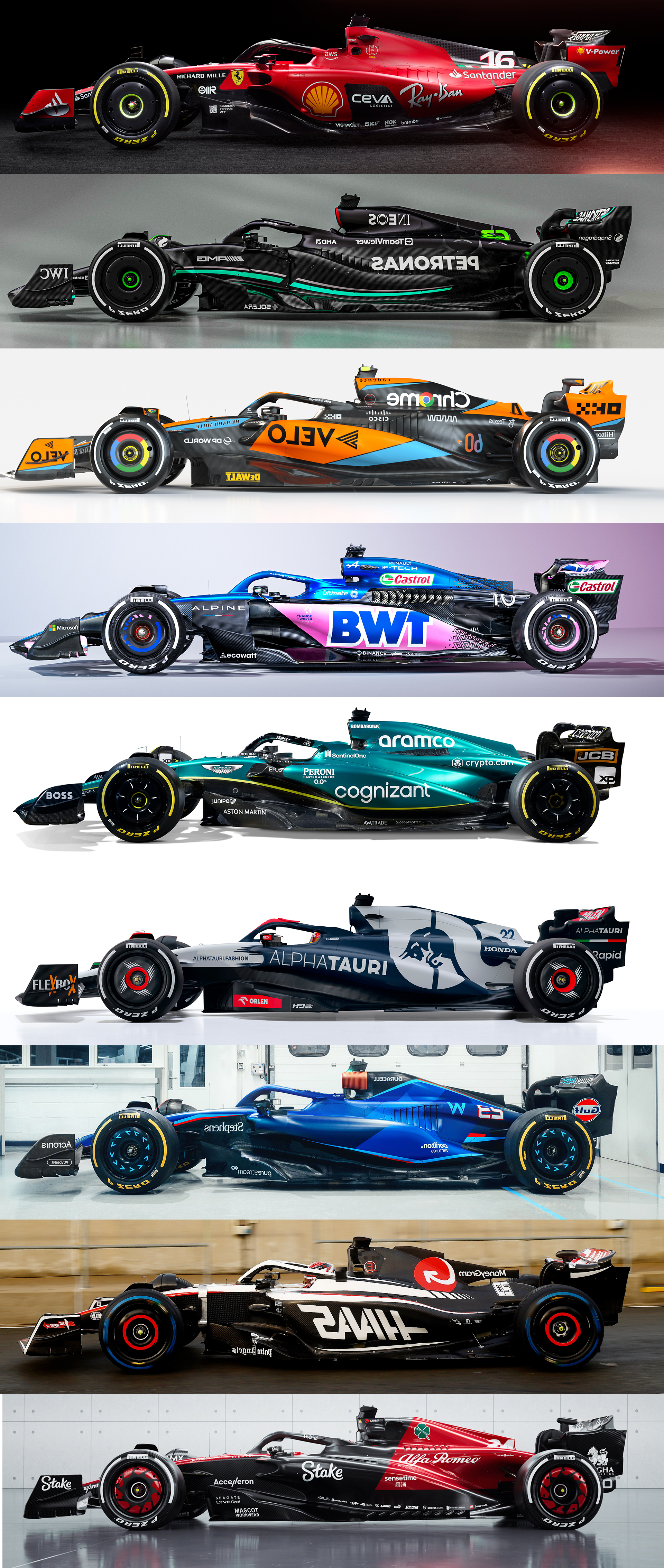
Obviously there are some teams that fall somewhere in between these design philosophies, especially Mercedes which has partly abandoned the zero-sidepods concept but has nevertheless maintained its own design identity by placing itself halfway between Ferrari and Red Bull.
Aston Martin is one of the cars that has changed the most compared here to last year, implementing part of the Ferrari/Alpine concept with a flare in the upper edge and doing a great job with regard to all aerodynamics. The AMR23 is certainly a car that contains innovations compared to the old lacklustre AMR22.
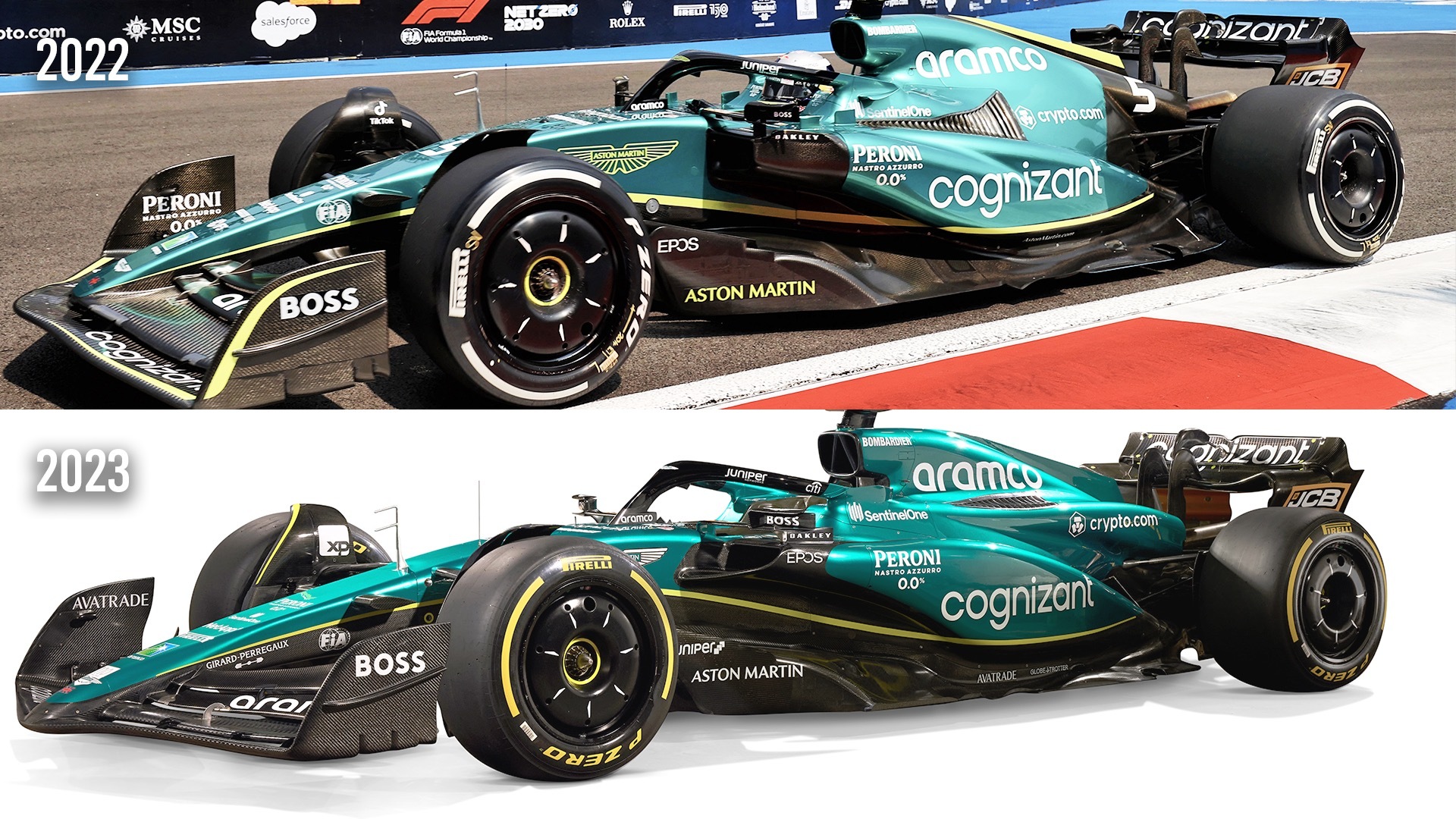
Alpine is the team that has changed the most in terms of mechanical design with its new pushrod rear suspension layout.
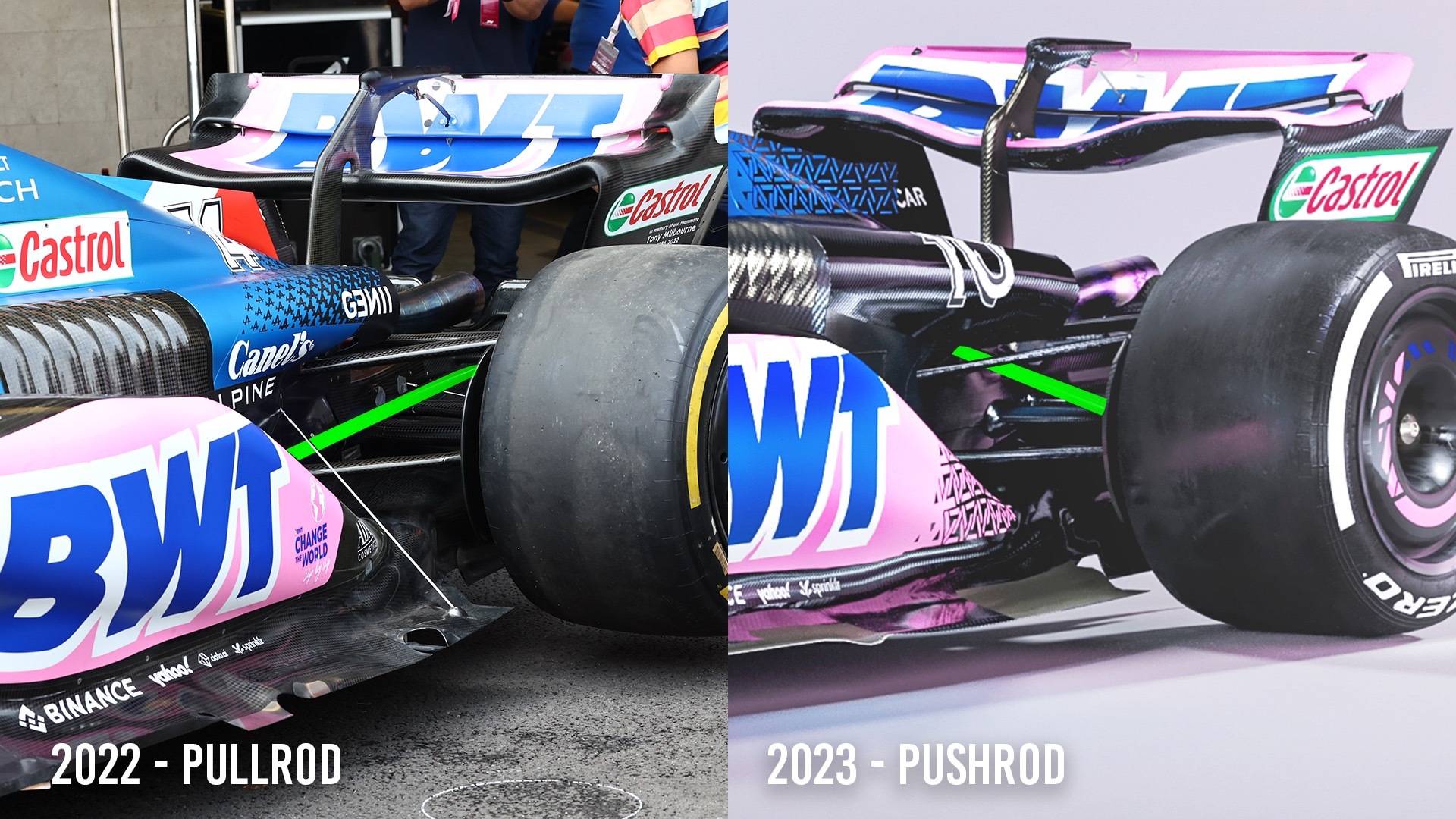
There’s also a completely revised layout in the wishbones compared to 2022. Alfa Romeo has moved the pushrod strut forward of the wishbones, a solution that copies what was seen on the RB18 last year.
McLaren was last to shake its car down, and its Bahrain run confirmed that the MCL60 we had seen at the launch was very faithful to reality.
The important work has been done in what is called the ‘undercut’ beneath the sidepod, with McLaren taking up much of the design of Red Bull’s RB18. The most interesting part concerns the upper edge of the floor, which drowns the lower side impact system in such a way as to form a real flow diverter. The floor, dulled in the shakedown photos, is nonetheless fairly true to the final 2022 spec.
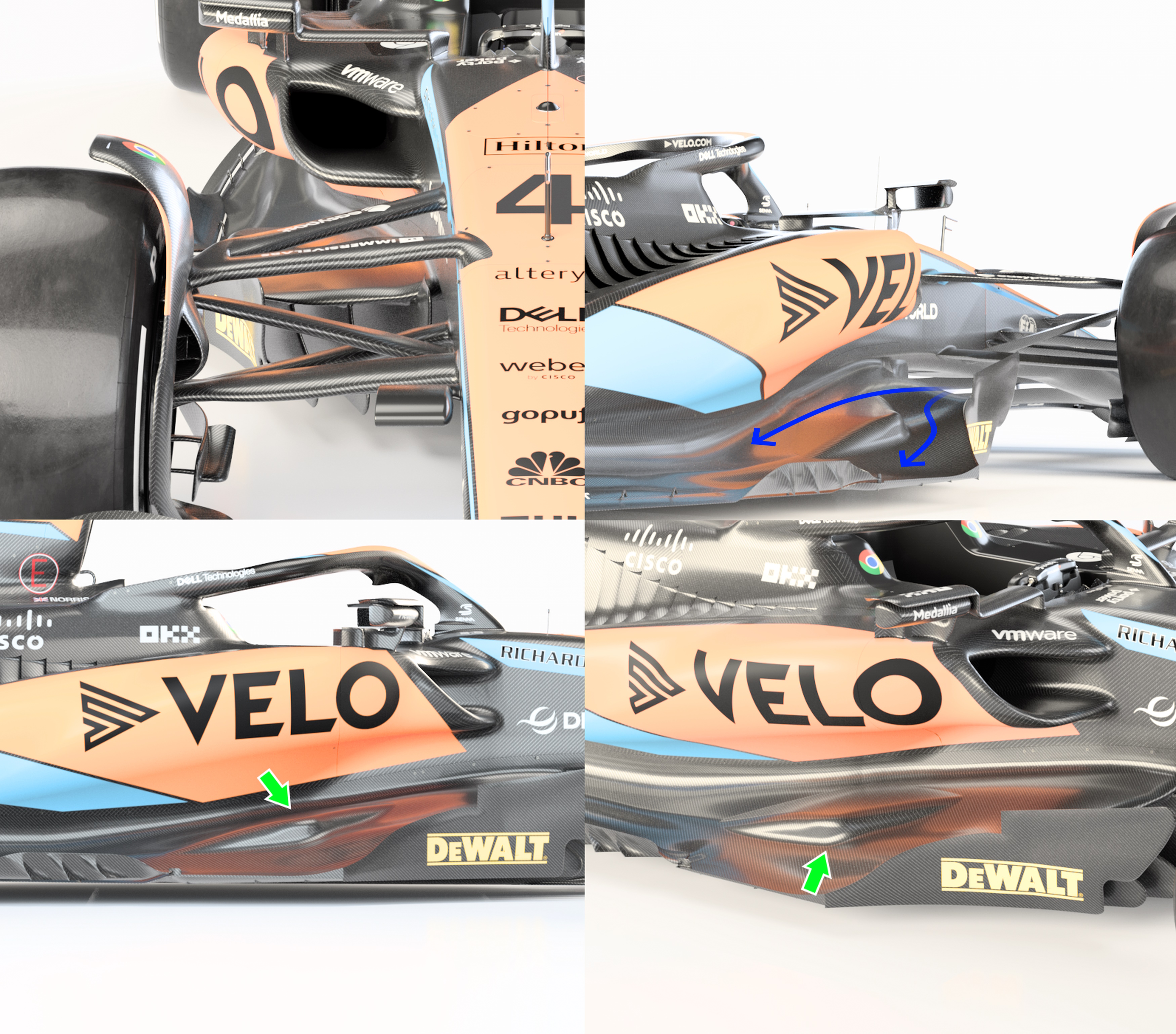
Among the most interesting solutions on the new cars was the channel inside the sidepods that we saw on the Ferrari SF-23.
This probably won’t be easily copied by the other teams. It seems ideal to work with the bump in the Ferrari bodywork to generate downforce and have a flow of air with more energy. The hot air expelled from the engine cover vents is low energy compared to the cold airflow.
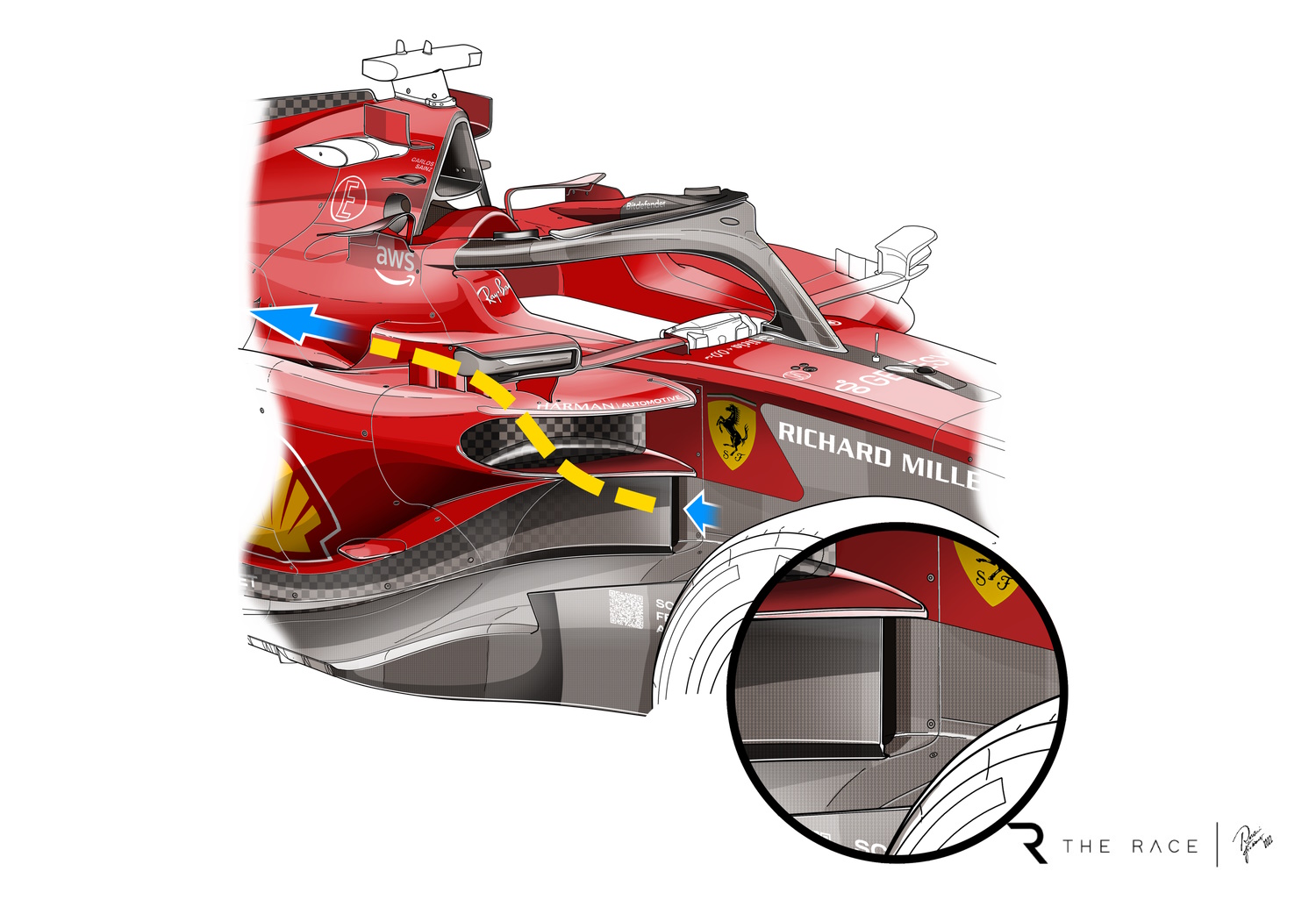
Also interesting is how Ferrari repurposed the front wing flow diverters that we saw on the Mercedes at Austin last year, which had been declared illegal by the FIA.
Article 3.9.8 of the technical regulations has been modified and Ferrari has meticulously studied it to adopt an improved version of what Mercedes tried. The gain in terms of aerodynamic performance is not particularly significant, as the Ferrari engineers themselves admitted, however, it does help in finding the outwash effect of the front tyre to reduce drag.
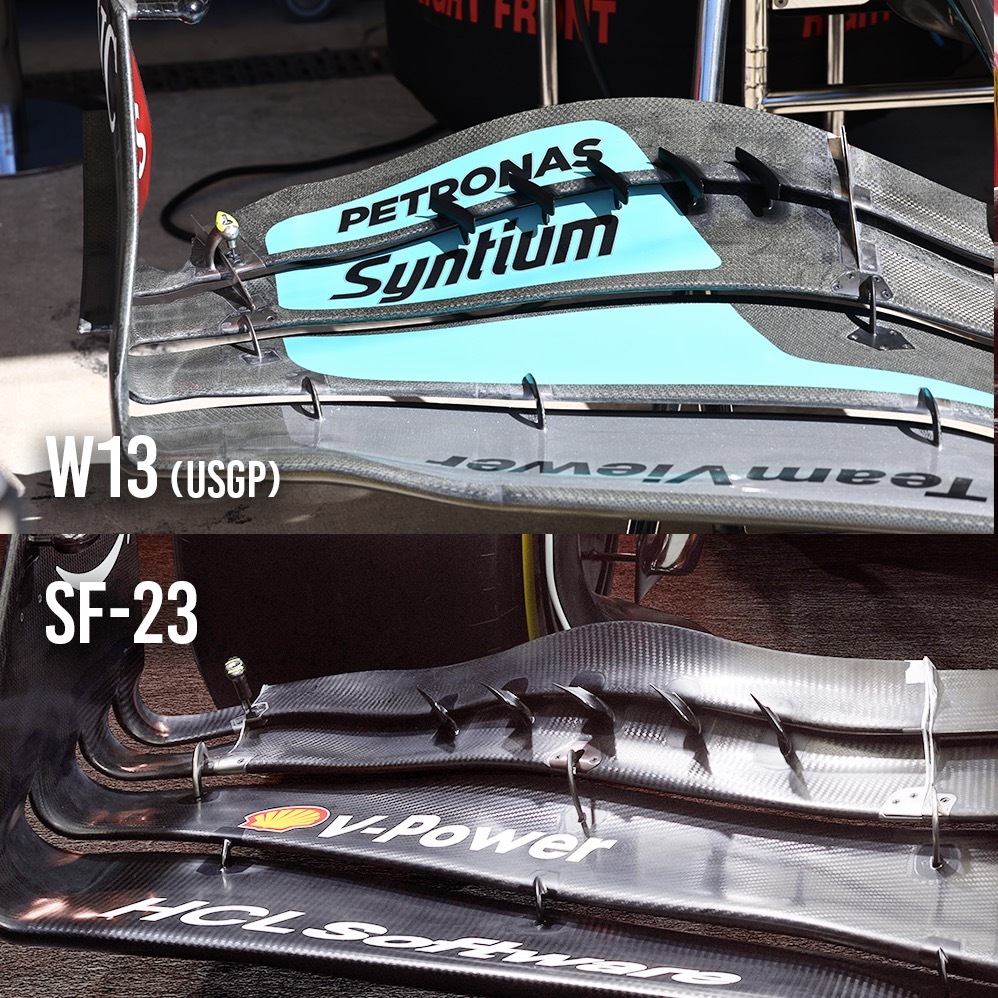
Mercedes, on the other hand, has focused more on ‘making legal’ the endplate that was introduced last year in Miami now that those rule tweaks have taken place. The endplate can be cut more to favour the outwash as in 2022, but Mercedes has studied the shape of the external flaps that throw the flow outwards with a painstaking work of micro-aerodynamics. This solution could be copied by many teams.
Many teams have copied Red Bull and Alfa Romeo, teams that had already studied last year’s wishbones with an aerodynamic function to assist the venturi channels.
Ferrari (and consequently Haas), Mercedes, McLaren, Alpine and Aston Martin have specially modified the arrangement of the wishbones in such a way as to direct the airflow in the direction of the venturi inlets.
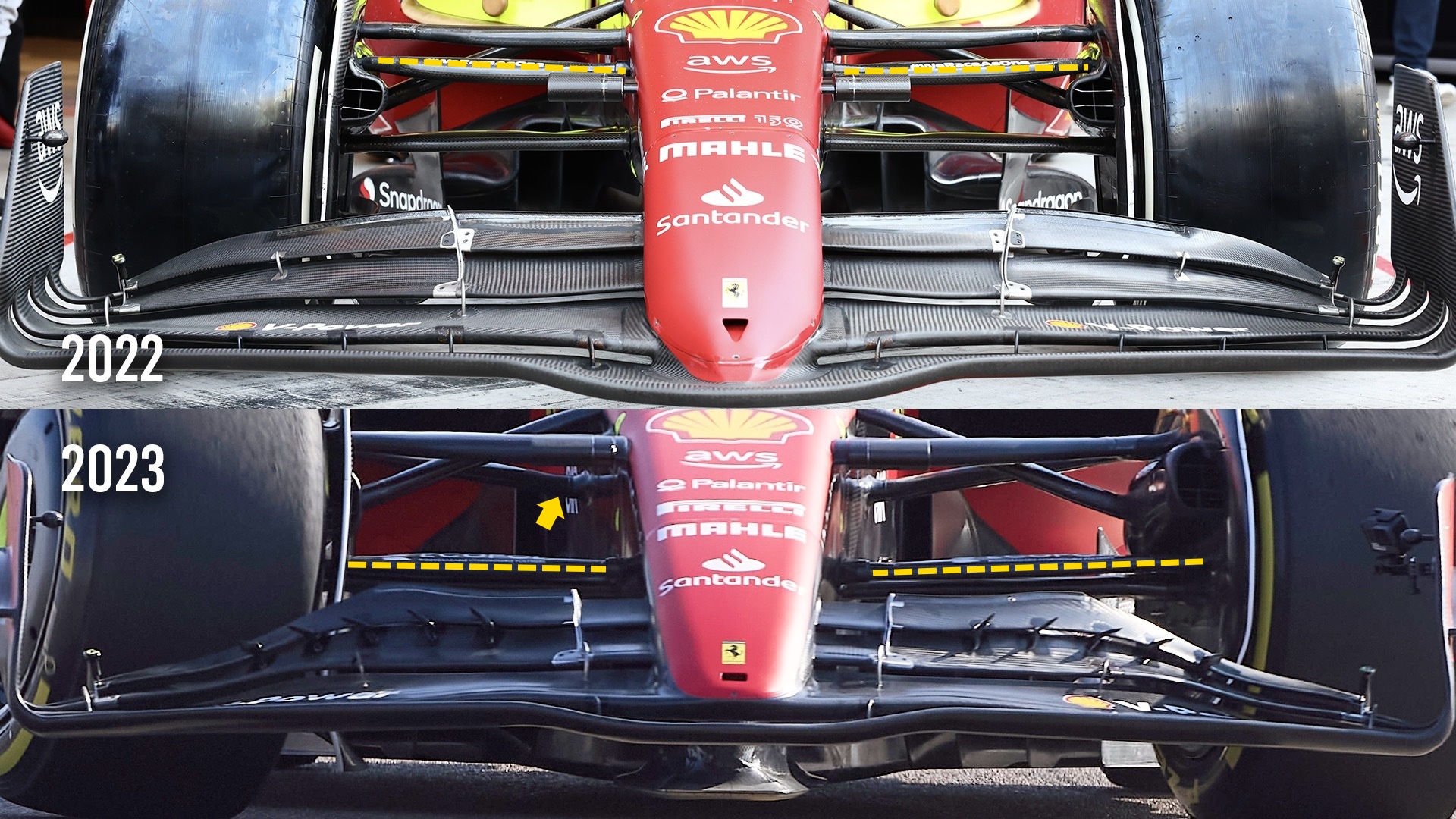
Ferrari and Mercedes have moved the steering rod aligning it with the lower wishbone, to have a better cleanliness of the flows in the highest part of the suspension, where the air raised by the flaps of the front wing passes.


